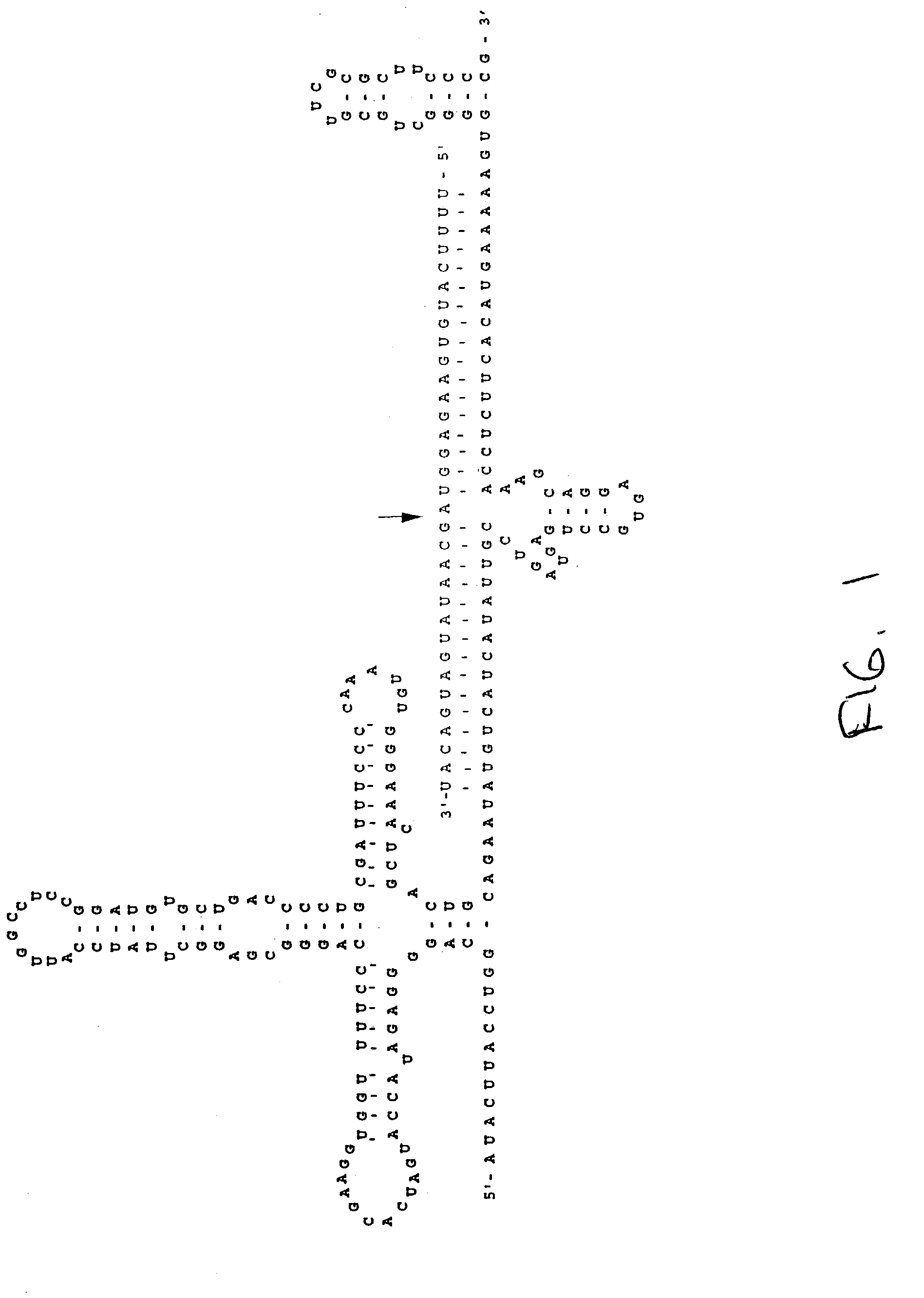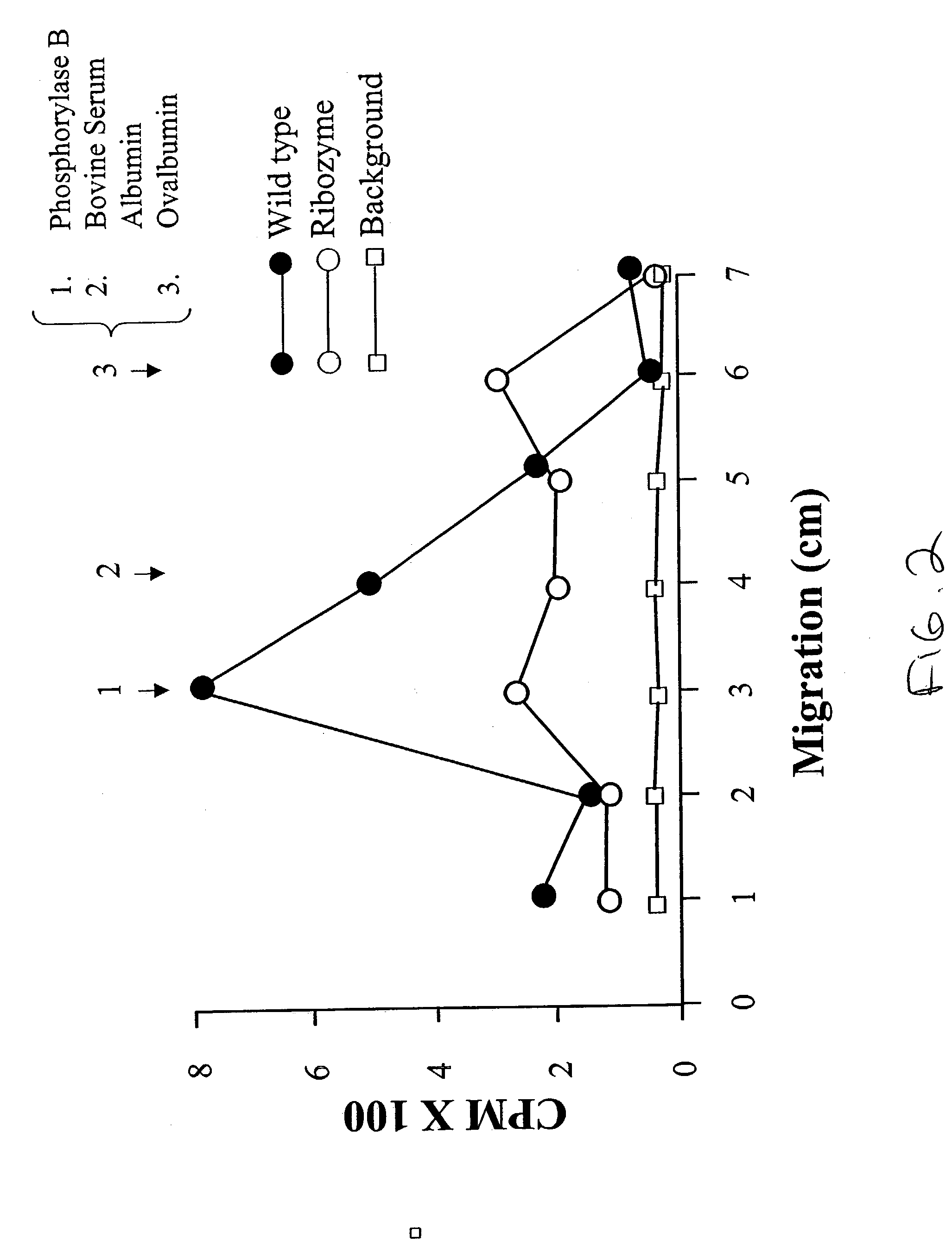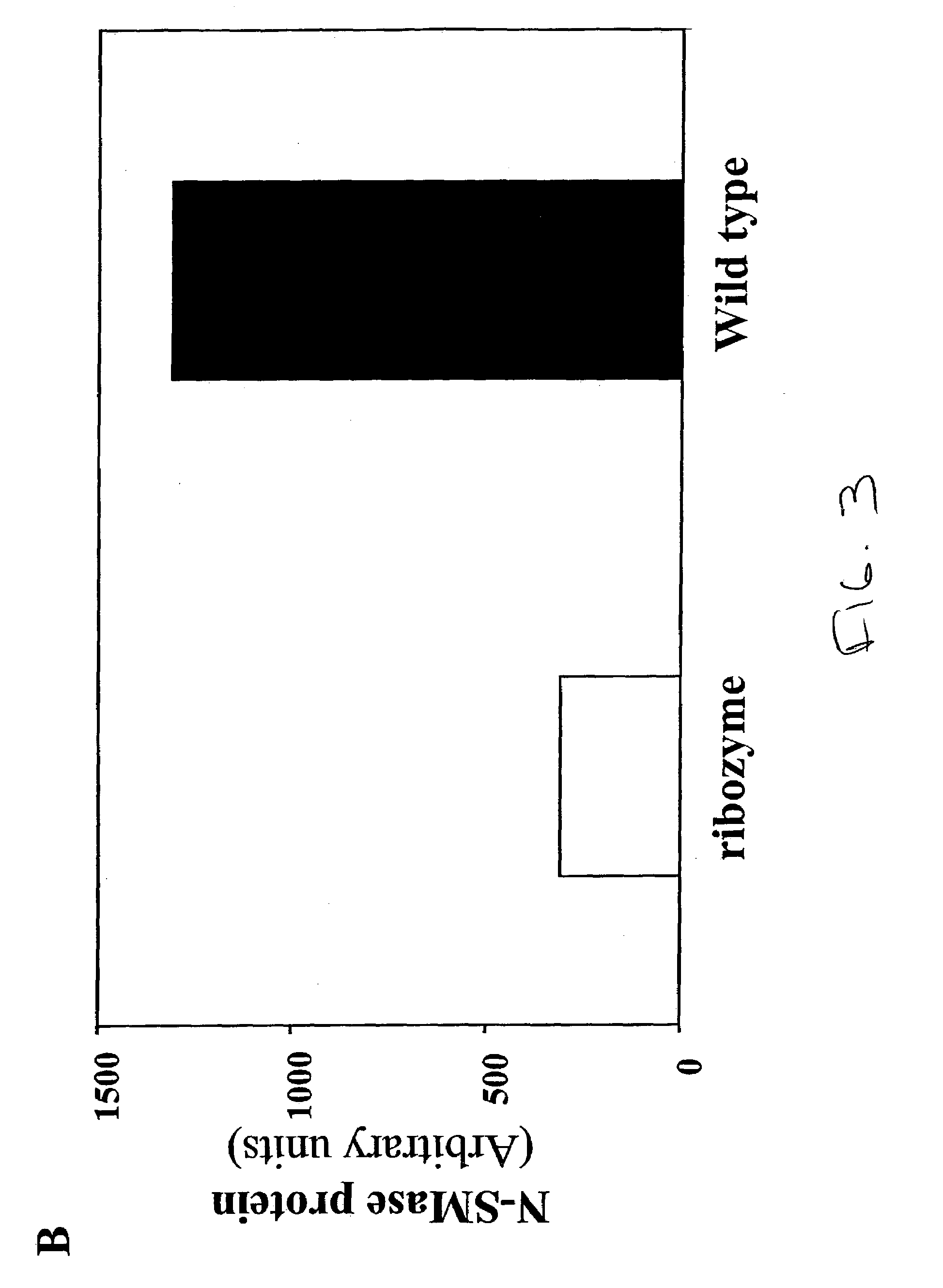Neutral sphingomyelinase antisense ribozyme and uses thereof
a ribozyme and sphingomyelinase technology, applied in the field of neutral sphingomyelinase antisense ribozyme, can solve the problems of inability to obtain agents, loss of these cells due to apoptosis, etc., and achieve the effects of downregulating n-smase activity, downregulating activity, and downregulating apoptosis
- Summary
- Abstract
- Description
- Claims
- Application Information
AI Technical Summary
Problems solved by technology
Method used
Image
Examples
example 1
Preparation of N-SMase Ribozyme Constructs and Transfection of MG63 Cells
[0063]The pU1 / N-SMase ribozyme vector of the invention was constructed according to a modification of the methods of Montgomery, R. A., and Dietz, H. C. (1997) Hum. Molec. Genet. 4:519–525, the contents of which are incorporated by reference. Specifically, a U1 snRNA chimera was chosen because of its secondary characteristics, such as extended hair pin stem loops at both 5′ and 3′ ends. The U1 promoter is constitutively active and is highly expressed. The chimera was produced by removal of the SM protein binding sequence between the hairpin structures, with an insertion of 30 base pairs of complementary RNA interrupted at its center by a 22 base pair hammerhead ribozyme. The N-SMase cDNA sequence (U.S. Pat. No. 5,919,687; Chatterjee, S. et al. (1999) J. Biol. Chem. 274:37407–37412) was analyzed for sites which are easily cleaved by ribozymes, i.e., the ribonucleotide sequences GUC or GUA. An RNA folding program...
example 2
Immunocytotichemical Analysis of Cells
[0070]Wild-type (WT) MG-63 cells and MG-63 cells transfected with LacZ constructs (L-3) and ribozyme expression constructs for the inhibition of N-SMase expression (CC) were analyzed by immunocytochemistry. The antibodies either recognized epitopes in fibronectin (control) or N-SMase. The analysis was performed in duplicates for the MG-63 cell line and the two mutant colonies. Immunohistochemical staining for N-SMase demonstrates near absence in clone CC, compared to both untransfected (WT) and sham-transfected (LacZ) lines. No differences were observed between the lines harboring pU1 / N-SMase, pZeoSVLacZ, or untransfected cells upon immunohistochemical anaylsis with a monoclonal antibody to fibronectin, suggesting that the chimeric cRNA did not globally impair pre-mRNA splicing or protein expression and metabolism.
example 3
Activity of Acid and Neutral Sphingomyelinase in MG-63 (WT) and Mutant Cells
[0071]Confluent culture of cells were harvested, washed, and pellets lysed in buffer containing 0.1% Triton™ X-100, 25 mM Tris (pH 7.4) buffer, 5 mM EDTA, 1 mM phenylmethylsulfonylfluoride and 2 μg each of chymostatin, leupeptin, antipain, and pepstatin A. The activity levels of acid and neutral sphingomyelinase were measured in cell extracts (100 μg protein) in duplicate as described previously employing [14C]-sphingomyelinase as the substrate.
[0072]Activities of A-SMase and N-SMase were also measured according to methods described in Chatterjee, S. and Ghosh, N. (1996) Glycobiology 6:303–311, incorporated herein by reference, with minor modifications. In brief, 5×106 MG63 cells were scraped from the culture plates, washed with PBS, and disrupted by repeated passage through a 25-gauge needle. Nuclei and cell debris were pelleted at 800×g for 5 min. Supernatant fluid was collected, and the protein concentrat...
PUM
| Property | Measurement | Unit |
|---|---|---|
| apparent molecular weight | aaaaa | aaaaa |
| concentrations | aaaaa | aaaaa |
| pH | aaaaa | aaaaa |
Abstract
Description
Claims
Application Information
 Login to View More
Login to View More - R&D
- Intellectual Property
- Life Sciences
- Materials
- Tech Scout
- Unparalleled Data Quality
- Higher Quality Content
- 60% Fewer Hallucinations
Browse by: Latest US Patents, China's latest patents, Technical Efficacy Thesaurus, Application Domain, Technology Topic, Popular Technical Reports.
© 2025 PatSnap. All rights reserved.Legal|Privacy policy|Modern Slavery Act Transparency Statement|Sitemap|About US| Contact US: help@patsnap.com



